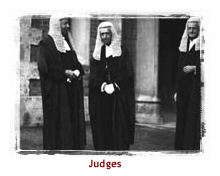The Commonwealth and Western Australia Over
the first 100 years of Federation, Commonwealth/State relations have been
influenced by the size of Western Australia, its distance from Canberra,
and its small population. While consisting of a third of the continent,
Western Australia has always been one of the 'small' States and until the
late 1960s a 'mendicant' State, dependent on the generosity of the Commonwealth
to provide services to the level of the other States. Over
the first 100 years of Federation, Commonwealth/State relations have been
influenced by the size of Western Australia, its distance from Canberra,
and its small population. While consisting of a third of the continent,
Western Australia has always been one of the 'small' States and until the
late 1960s a 'mendicant' State, dependent on the generosity of the Commonwealth
to provide services to the level of the other States.With just under 10% of the population, Western Australians have a limited voice in federal politics. Conscious of the potential for New South Wales and Victoria to dominate an Australian Parliament, the federal system aimed to give extra weight to the States by allowing for an upper house consisting of an equal number of senators from each State. The Senate was intended as a State's House, in which senators represented their State's perspective in reviewing legislation from the House of Representatives, but it quickly evolved into a forum for party politics. In recent times the nature of the Senate has changed again with the growth of small parties. As the current Leader of the Opposition, Geoff Gallop, observed, the Senate represents
 The
other area where Commonwealth/State relations have evolved in ways unrecognisable
to the founders of Federation have been influenced by the High
Court. It has played a crucial role in the extension of Commonwealth
powers at the expense of State powers. The
other area where Commonwealth/State relations have evolved in ways unrecognisable
to the founders of Federation have been influenced by the High
Court. It has played a crucial role in the extension of Commonwealth
powers at the expense of State powers.
|
Please note: The content on this website is made available for archival purposes and may not meet the State Library of Western Australia's current standards for web accessibility, mobile device compatibility, historical accuracy and cultural sensitivity.